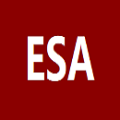The ongoing push to send humans back to the Moon and to Mars is giving rise to a wide range of novel technical solutions in support of prospective astronaut expeditions. Against this backdrop, the European Space Agency (ESA) has recently launched an investigation into unobtrusive interface technologies as a potential answer to such challenges. Three particular technologies have shown promise in this regard: EEG-based brain-computer interfaces (BCI) provide a non-invasive method of utilizing recorded electrical activity of a user's brain, electromyography (EMG) enables monitoring of electrical signals generated by the user's muscle contractions, and finally, eye tracking enables, for instance, the tracking of user's gaze direction via camera recordings to convey commands. Beyond simply improving the usability of prospective technical solutions, our findings indicate that EMG, EEG, and eye-tracking could also serve to monitor and assess a variety of cognitive states, including attention, cognitive load, and mental fatigue of the user, while EMG could furthermore also be utilized to monitor the physical state of the astronaut. In this paper, we elaborate on the key strengths and challenges of these three enabling technologies, and in light of ESA's latest findings, we reflect on their applicability in the context of human space flight. Furthermore, a timeline of technological readiness is provided. In so doing, this paper feeds into the growing discourse on emerging technology and its role in paving the way for a human return to the Moon and expeditions beyond the Earth's orbit.
翻译:正在推动将人送回月球和火星,这正在形成一系列支持未来宇航员考察的新型技术解决方案。在这一背景下,欧洲航天局(欧空局)最近启动了对无侵扰界面技术的调查,作为应对此类挑战的潜在办法。在这方面,有三种特定技术显示了希望:基于EEG的脑计算机界面(BCI)提供了一种使用用户大脑电子活动记录的非侵入性方法,电感仪(EMG)能够监测用户肌肉收缩产生的电子信号,最后,眼睛跟踪使用户能够通过摄像录音跟踪瞄准方向以传送指令。我们的调查结果表明,除了简单地提高潜在技术解决方案的可用性之外,EGG、EEG和眼睛跟踪还有助于监测和评估各种认知状态,包括用户的注意、认知负荷和精神疲劳,同时还可用于监测宇航员的物理状态。在本文中,我们详细阐述了这三种使用户的视向方向看视方向,以便通过摄像录音来传递指令。我们不仅能够提高潜在技术的可用性,而且能够反映其不断增长的轨道在地球轨道上的位置。




